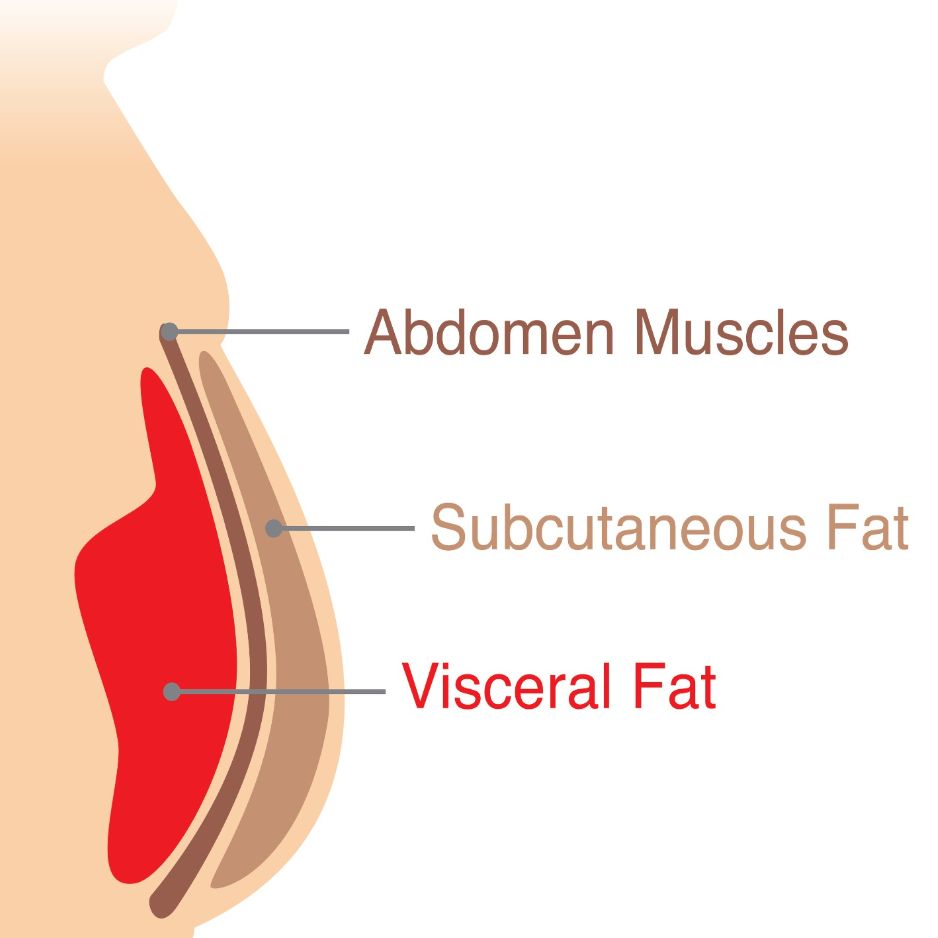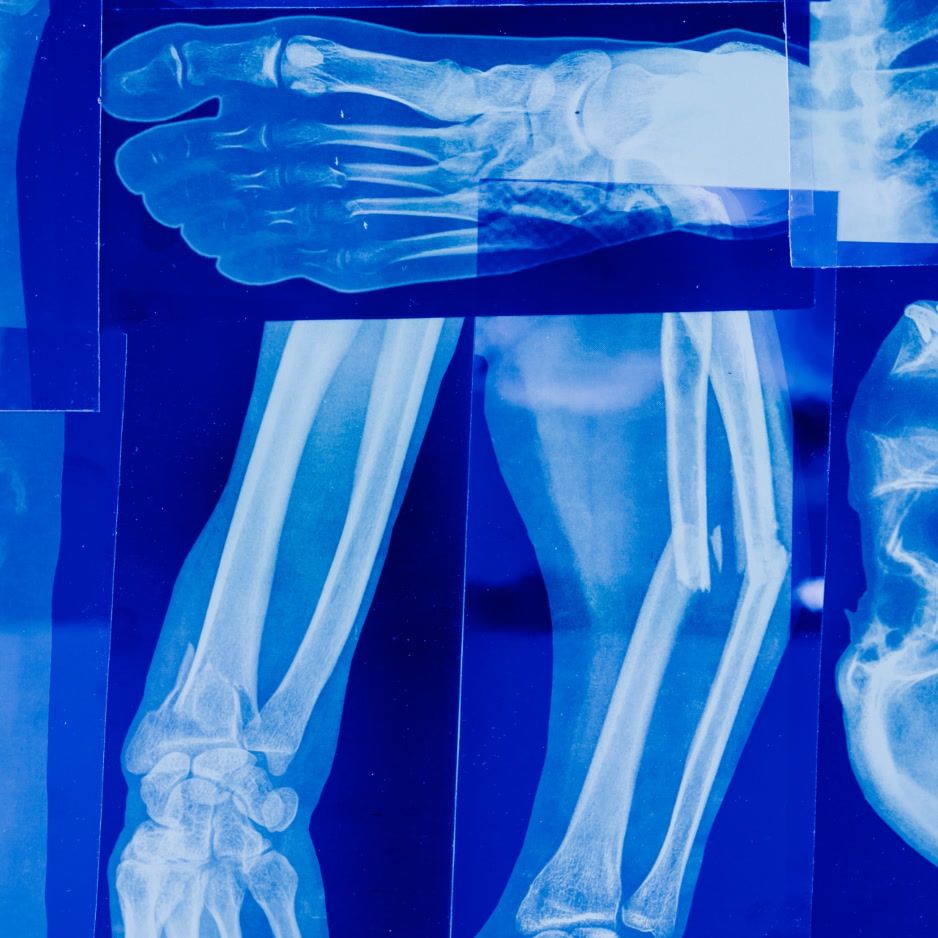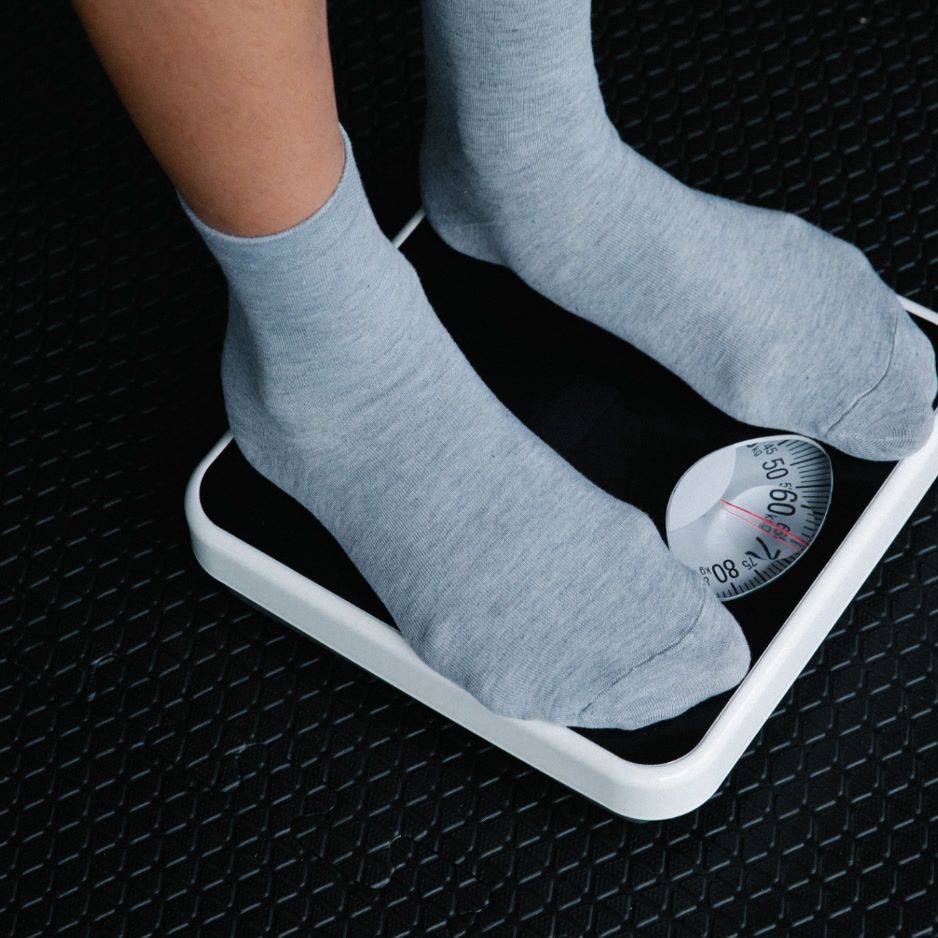High Protein Low Carb Foods: Ultimate Guide and Food List
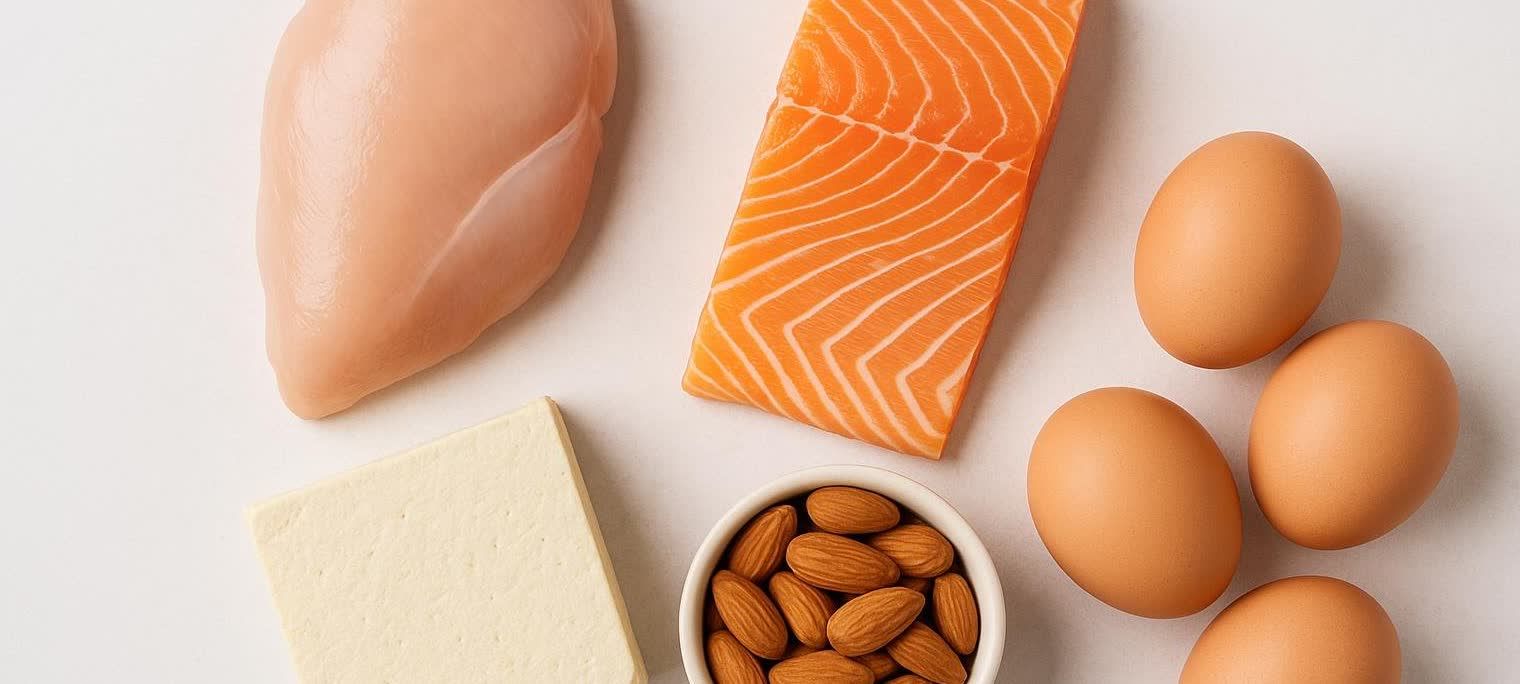
High Protein Low Carb Foods: Ultimate Food List
At a glance: Keeping carbs in check while hitting your protein target doesn’t have to feel like macro Tetris. Use this science-backed cheat sheet to build meals that grow muscle, curb cravings, and keep glucose steady—whether you’re eating keto, managing diabetes, or just trying to get more protein on your plate.
Why Pair High Protein With Low Carbs?

- Body composition wins. Protein supplies the amino acids your muscles need to grow and repair tissue after training. Adequate intake—1.6–2.2 g per kilogram of body weight—helps you preserve muscle while lowering overall calories, a perfect storm for fat loss (International Society of Sports Nutrition, 2017).
- Hunger control. High-protein, low-carb meals reduce ghrelin (the “I’m starving” hormone) and boost peptide YY, leading to greater satiety and lower spontaneous calorie intake (Mars et al., 2015).
- Steady blood sugar. Fewer carbs mean smaller glucose spikes. For people with insulin resistance or type 2 diabetes, low-carb protein choices can improve A1C and time-in-range metrics.
- Metabolic edge. Your body burns more calories digesting protein (20–30 % thermic effect of food) than it does fats or carbs—another small but meaningful advantage for fat loss.
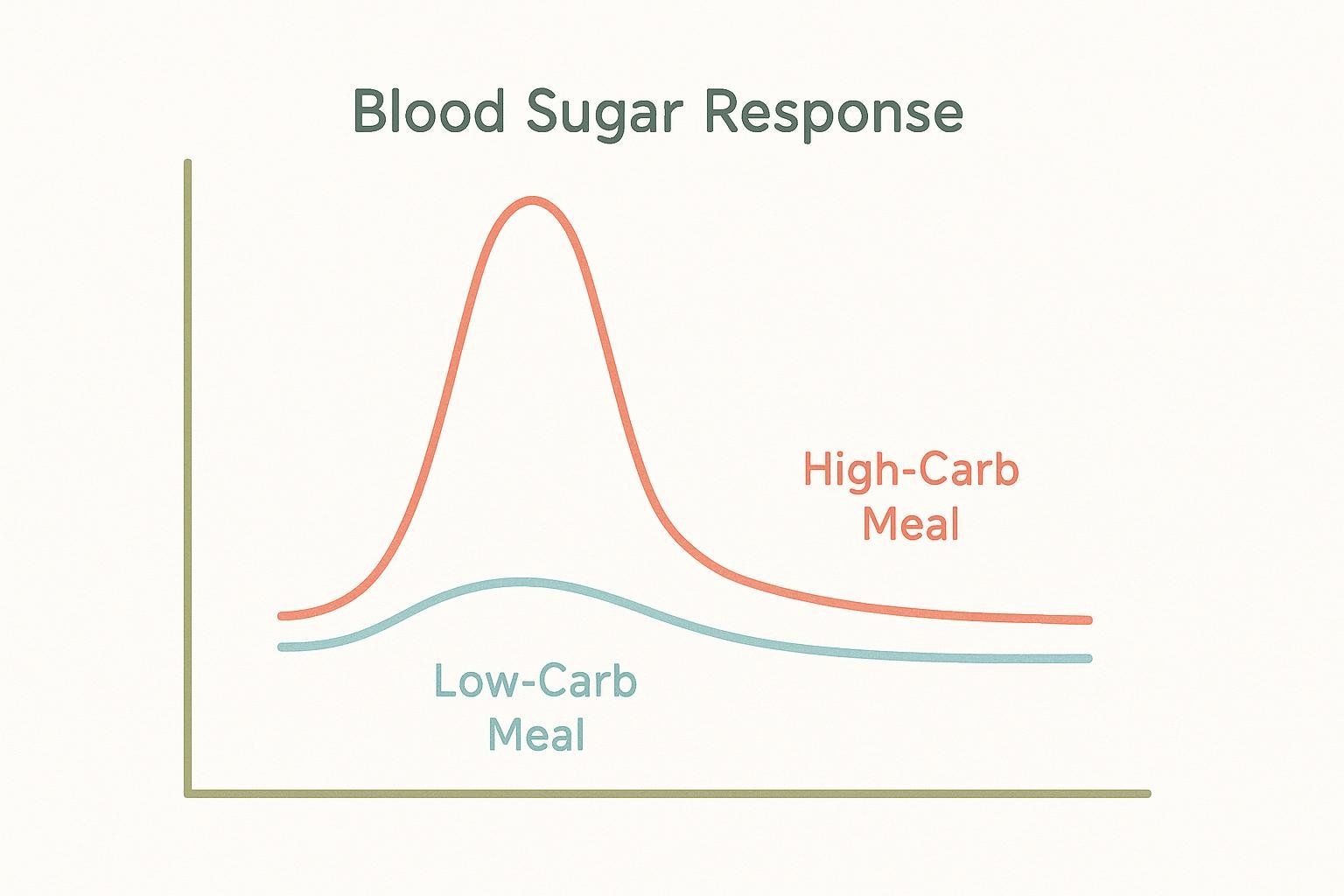
Want to see how tweaks in muscle and fat show up in black-and-white numbers? A quick DEXA scan quantifies progress far beyond the bathroom scale.
How To Use This List
• Data columns. “Carbs” and “Fiber” are total grams per 100 g. Net carbs = Carbs – Fiber.
• Protein benchmark. Every food provides ≥ 10 g protein per 100 g.
• Carb benchmark. Foods deliver ≤ 10 g net carbs per 100 g (or ≤ 5 g net carbs in a typical snack-sized serving for nuts/seeds).
• Scaling portions. Use the per-100 g data to match your food-tracker entries quickly.
• Source. All nutrient values pulled from USDA FoodData Central.
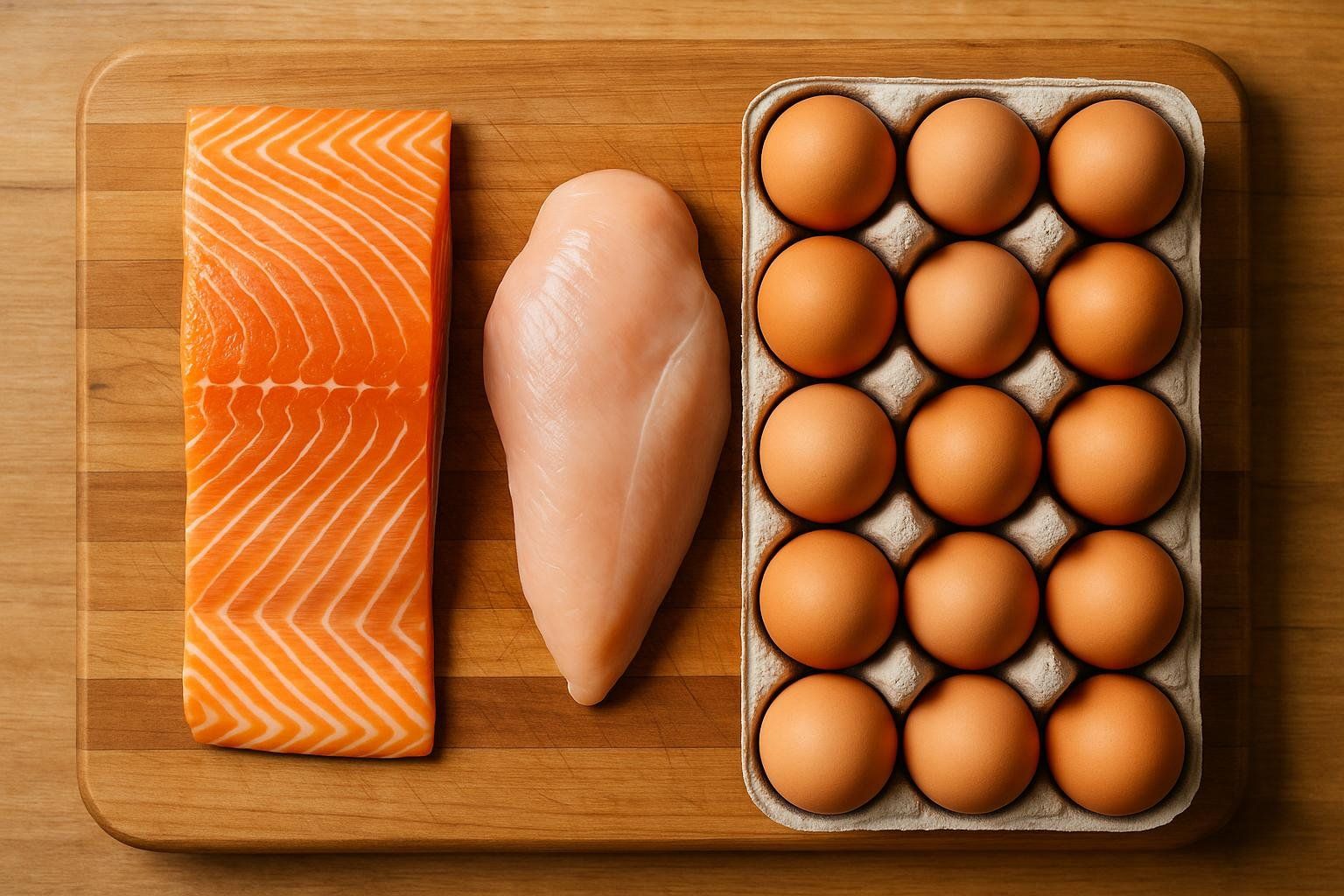
The Master Matrix: 28 High-Protein, Low-Carb Foods
| Category | Food (100 g) | Protein (g) | Carbs (g) | Fiber (g) | Net Carbs (g) | Quick Tips |
|---|---|---|---|---|---|---|
| Meat & Poultry | Chicken breast, skinless | 31.0 | 0 | 0 | 0 | Batch-cook and shred for salads |
| Turkey breast, roasted | 29.0 | 0 | 0 | 0 | Wrap slices around avocado | |
| Lean ground beef (90/10) | 26.0 | 0 | 0 | 0 | Lettuce-wrap burgers | |
| Pork tenderloin | 24.0 | 0 | 0 | 0 | Citrus-herb marinade | |
| Bison sirloin | 26.0 | 0 | 0 | 0 | Iron & B-vitamin boost | |
| Seafood | Canned tuna in water | 23.0 | 0 | 0 | 0 | Mix with Greek yogurt & mustard |
| Salmon, wild-caught | 22.0 | 0 | 0 | 0 | Omega-3 powerhouse | |
| Shrimp | 20.0 | 0 | 0 | 0 | Thaws in minutes | |
| Cod | 18.0 | 0 | 0 | 0 | Mild flavor, kid-friendly | |
| Scallops | 24.0 | 3.0 | 0 | 3.0 | Pan-sear in butter | |
| Eggs & Dairy | Egg, whole | 13.0 | 1.1 | 0 | 1.1 | Pasture-raised = more omega-3 |
| Egg whites (liquid) | 11.0 | 0.7 | 0 | 0.7 | Zero-fat protein boost | |
| Greek yogurt, plain non-fat | 10.3 | 3.6 | 0 | 3.6 | Sweeten with berries | |
| Cottage cheese, 2 % | 11.1 | 3.4 | 0 | 3.4 | Top with hemp hearts | |
| Whey isolate powder* | 24.0 | 2.0 | 0 | 2.0 | Easy shake; brand-dependent | |
| Plant-Based Proteins | Tofu, extra-firm | 17.3 | 2.0 | 1.0 | 1.0 | Press & air-fry for crunch |
| Seitan | 25.0 | 4.0 | 0.6 | 3.4 | Wheat-gluten; avoid if celiac | |
| Edamame, shelled | 11.9 | 8.9 | 5.2 | 3.7 | Steam-in-bag convenience | |
| Nuts & Seeds | Hemp hearts | 31.6 | 8.7 | 4.0 | 4.7 | 2 Tbsp ≈ 1 g net carbs |
| Peanuts | 25.8 | 16.1 | 8.5 | 7.6 | Pair with celery sticks | |
| Almonds | 21.2 | 21.6 | 12.5 | 9.1 | 1 oz serving ≈ 2.6 g net | |
| Pumpkin seeds (roasted) | 29.8 | 14.7 | 6.5 | 8.2 | Magnesium-rich | |
| Brazil nuts | 14.3 | 11.7 | 7.5 | 4.2 | Selenium superstar |
*Typical isolate powder scoop (≈ 30 g). Values vary by brand.
Snack & Meal Ideas For Every Lifestyle
1. Busy Professionals
| Situation | Grab-N-Go Combo | Macros* |
|---|---|---|
| Commute breakfast | Whey isolate + unsweetened almond milk & hard-boiled egg | ~30–35 g P, 4–6 g C |
| Desk snack | 2 oz beef jerky + 10 almonds | ~25 g P, 3 g C |
| Post-workout | Greek yogurt parfait (≈ 170 g) + collagen peptide | ~28–32 g P, 6–8 g C |
*P = protein, C = carbs. Numbers vary by brand and portion size.

2. Blood-Sugar Management
| Meal | Food Idea | Why It Works |
|---|---|---|
| Lunch | Salmon salad over leafy greens with olive-oil vinaigrette | Protein + fats blunt glucose spikes |
| Snack | Celery sticks + cottage cheese | Slow-digesting casein curbs hunger |
| Dinner | Grilled chicken thighs, roasted asparagus, buttered mushrooms | Non-starchy veg keeps carbs low |
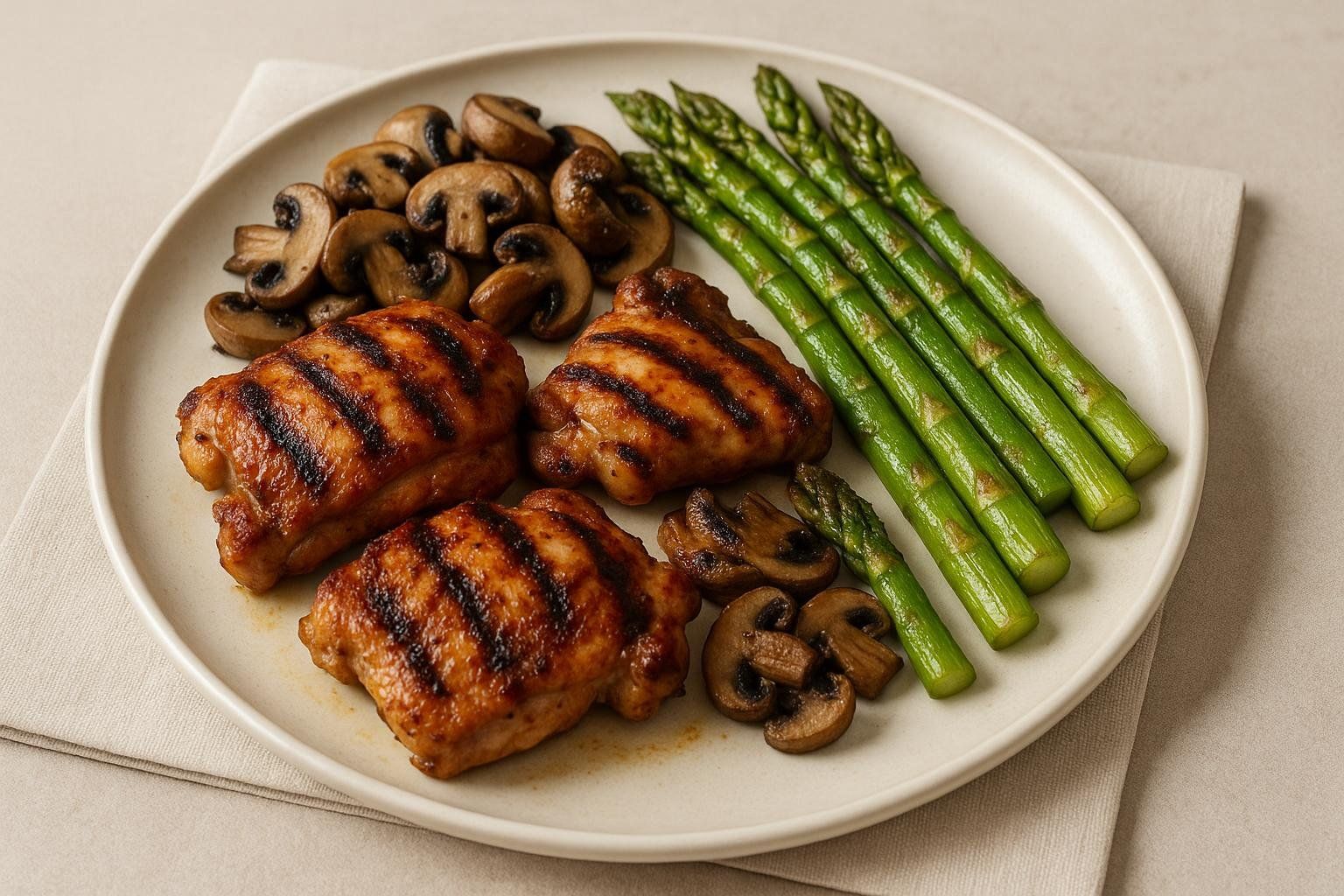
3. Plant-Based or Flexitarian
| Meal | Food Idea | Protein | Net Carbs |
|---|---|---|---|
| Breakfast | Tofu scramble with spinach & nutritional yeast | ~20–25 g | ~4–6 g |
| Lunch | Seitan lettuce wraps with avocado salsa | ~25–30 g | ~4–6 g |
| Snack | Hemp-chia pudding (30 g hemp + 10 g chia) | 15 g | 5 g |
🛠️ For more meat-free inspo, dive into 30 high-protein vegetarian meals.
Smart Shopping & Meal Prep Tips
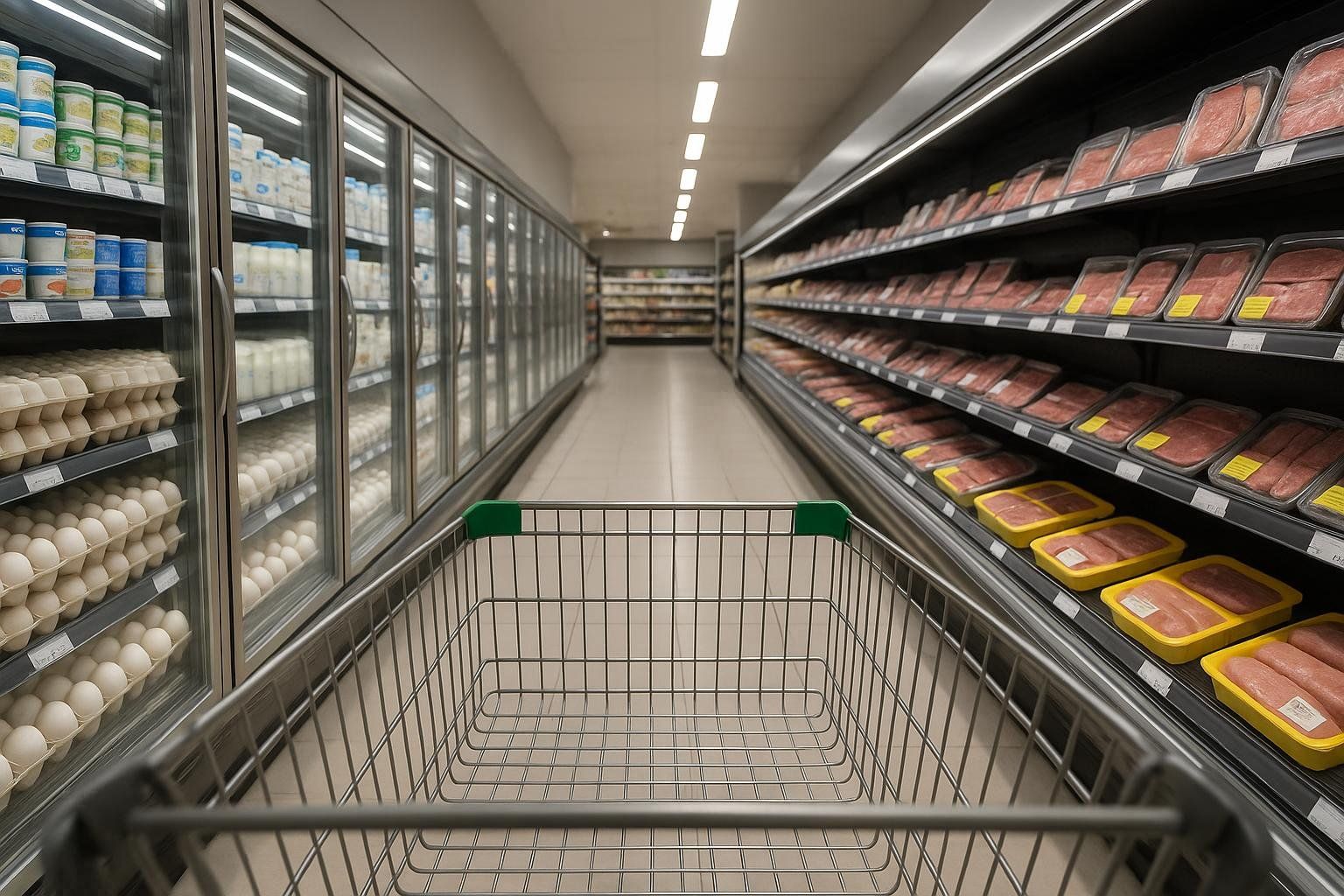
- Shop the perimeter first. Fresh meat, seafood, eggs, and dairy live on the store’s outer ring—exactly where low-carb protein hunters want to be.
- Read labels on “healthy” snacks. Many protein bars sneak in sugar alcohols. Aim for < 5 g net carbs per bar.
- Bulk-buy basics. Family-size packs of chicken or turkey slash cost per gram of protein. Freeze portions flat for quick thawing.
- Leverage freezer seafood. Wild salmon, cod, and shrimp keep months longer and cook from frozen.
- Batch-cook once, eat thrice. Roast a sheet pan of protein and veggies; change sauces to avoid flavor fatigue.
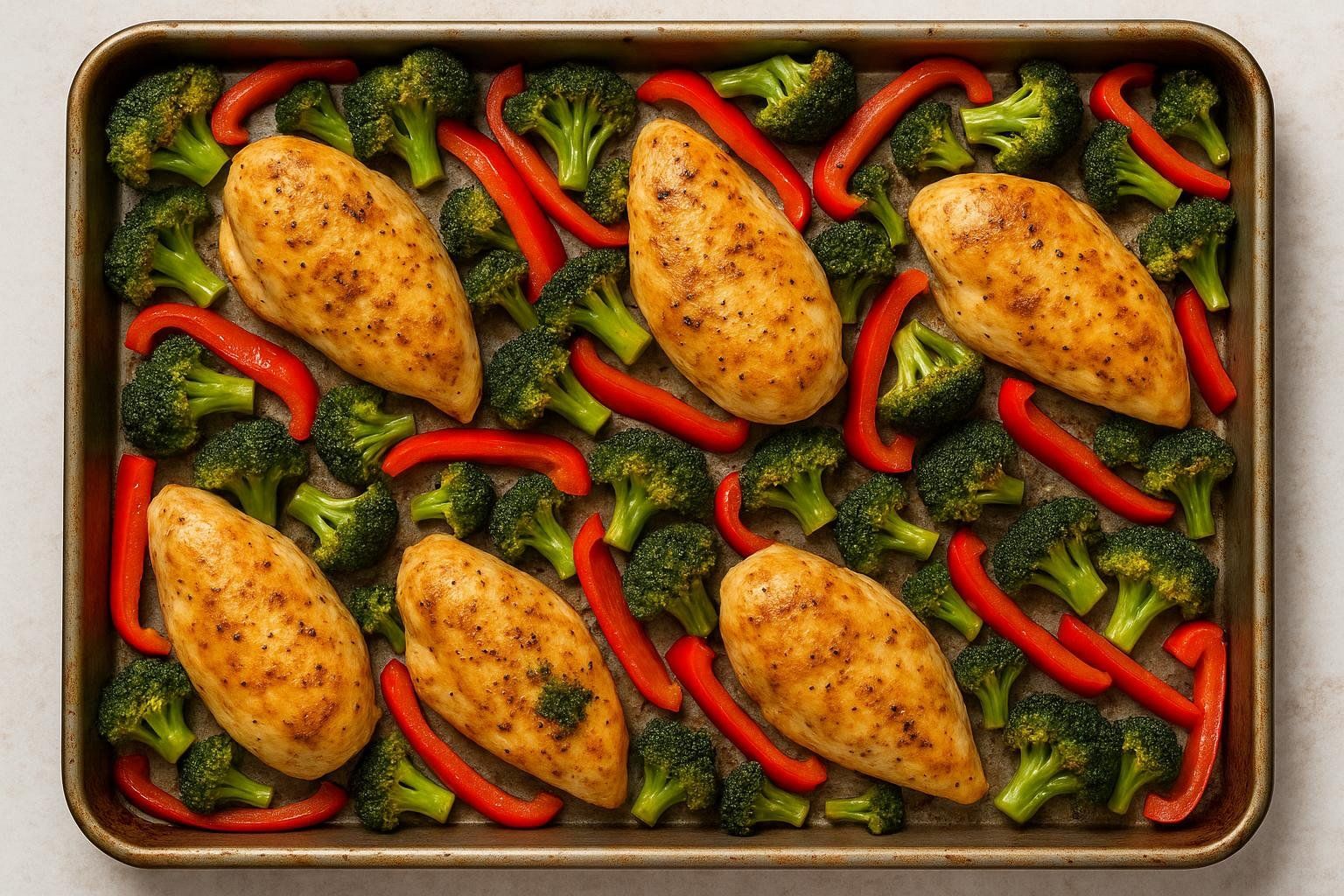
Track Progress With Data, Not Vibes
Muscle gain and fat loss don’t always show up on the scale. A DEXA scan quantifies:
• Lean mass vs. fat mass changes after switching to higher-protein meals.
• Visceral fat trends, a key metabolic-health marker (why visceral fat matters).
• Bone density, ensuring low-carb dieting isn’t compromising calcium intake.
Book a scan in under two minutes and get actionable, color-coded maps you can overlay after just 6–8 weeks of dietary tweaks.
FAQs About High-Protein, Low-Carb Eating
What counts as “low carb”?
Low-carb isn’t a single number. Keto plans cap carbs < 50 g per day, while many people thrive at 75–125 g. Start where you can sustain.
How much protein do I need?
Most active adults do well with 1.6–2.2 g of protein per kilogram of body weight—adjust toward the higher end when strength training or eating in a calorie deficit.
Is fruit off-limits?
Berries contain lots of fiber and fewer carbs than most fruit; 100 g of strawberries has ~7 g net carbs. Enjoy in moderation and pair with protein to flatten glucose response.
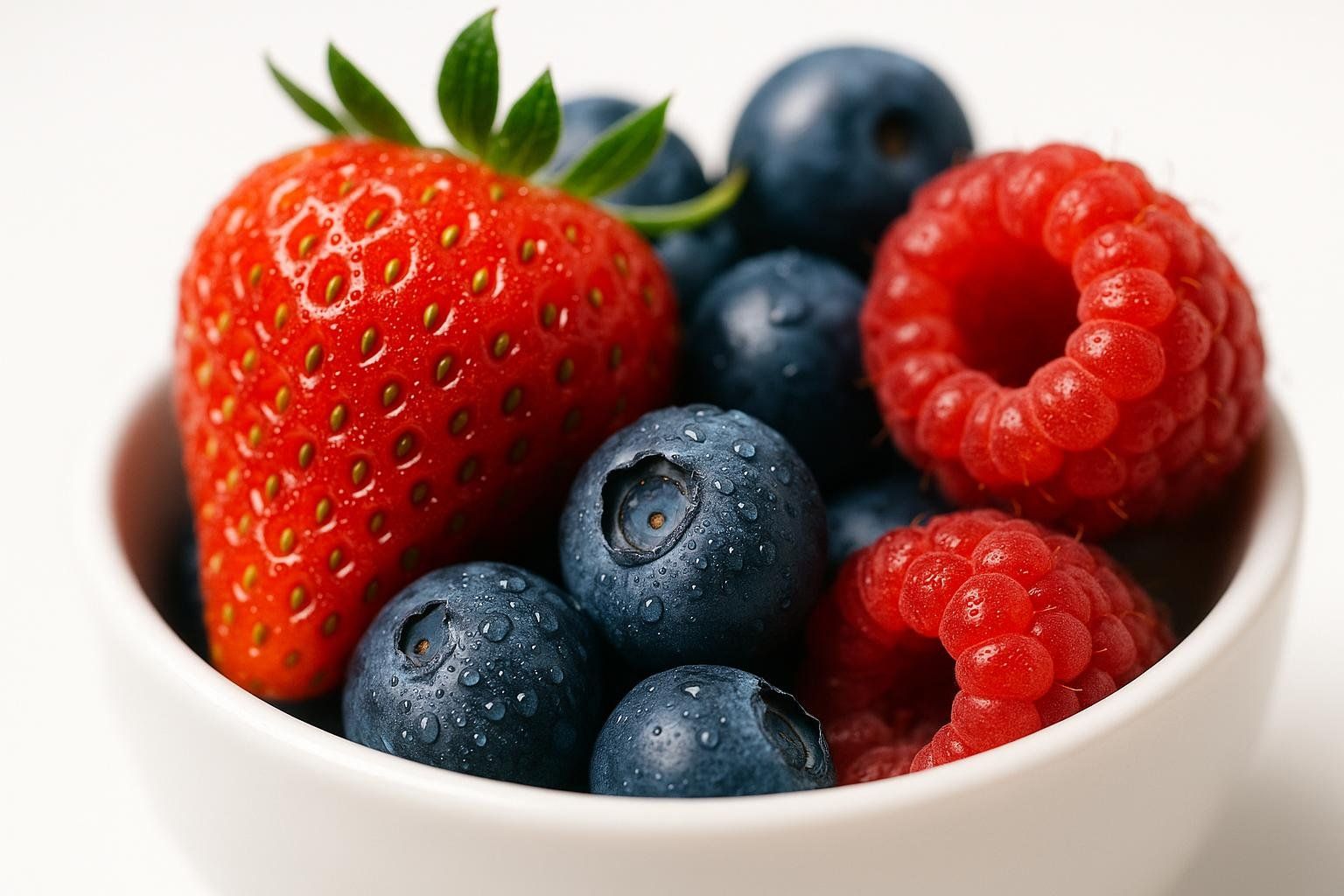
Can I build muscle on a plant-based low-carb diet?
Yes. Focus on soy foods (tofu/tempeh), seitan, and use protein powders. Track total calories—undereating slows muscle protein synthesis.
Key Takeaways
• Prioritize foods that deliver ≥ 10 g protein and ≤ 10 g net carbs per 100 g.
• Mix animal and plant proteins to diversify micronutrients and gut-friendly fibers.
• Batch-cook, read labels, and keep shelf-stable options (tuna, whey, nuts) on hand.
• Verify your body-composition results with a DEXA scan instead of guessing.
Apply these guidelines to your next grocery trip to turn every meal into a data-backed step toward better body composition and metabolic health.
